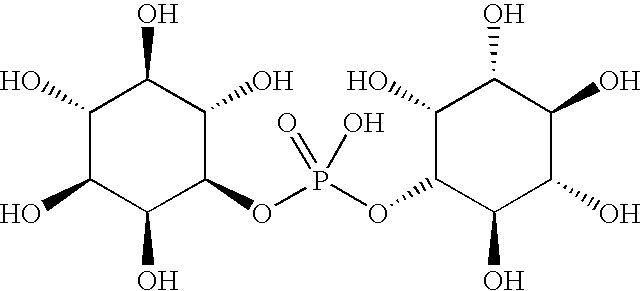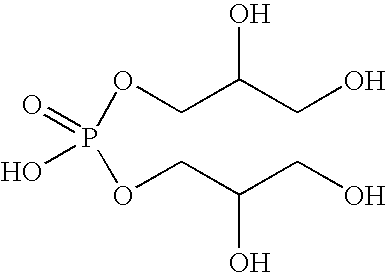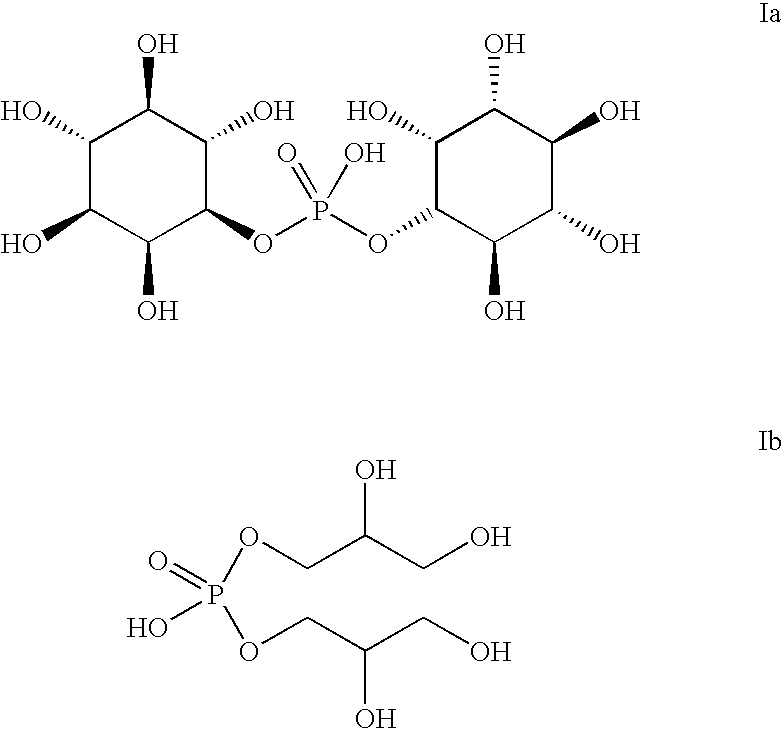Cosmetic formulations
a technology of cosmetic formulations and formulas, applied in the field of cosmetic formulations, can solve the problems of skin cells being damaged thermally, no agent is known to offer protection, and the cell protein and enzyme denaturation is not known
- Summary
- Abstract
- Description
- Claims
- Application Information
AI Technical Summary
Benefits of technology
Problems solved by technology
Method used
Image
Examples
example 2
[0130] O / W Cream
[0131] According to the invention a di-inositol-phosphate-containing cream (O / W) is made from the following components:
4 Components Percentage by Weight (% w / v) Paraffin oil (DAB 9) 7.00 Avocado oil 3.00 Glycerylmonostearate 4.00 Di-inositol phosphate 0.50 Titanium dioxide 1.00 Sodium lactate 3.00 Glycerine 3.00 Preservative agents, coloring q.s. matter, perfume Water Ad 100.00
[0132] As preservative agent 0.05% propylhydroxybenzoate or 0.15% methyl4-hydroxybenzoate may be used.
example 3
[0133] Liposome-Containing Gel
[0134] According to the invention a liposome-containing gel that contains di-inositol phosphate is made from the following components:
5 Components Percentage by Weight (% w / v) Lecithin 6.00 Shea butter 3.00 Di-inositol phosphate 0.50 -Tocopherol 0.20 Biotin 0.08 Sodium citrate 0.50 Glycin 0.20 Urea 0.20 Sodium PCA 0.50 Hydrolized collagen 2.00 Xanthan gum 1.40 Sorbitol 3.00 Preservative agents, coloring q.s. matter, perfume Water ad 100.00
[0135] As preservative agent 0.05% propylhydroxybenzoate or 0.15% methyl4-hydroxybenzoate may be used.
example 4
[0136] Gel
[0137] According to the invention a di-inositol-phosphate-containing gel (O / W) is made from the following components:
6 Components Percentage by Weight (% w / v) Carbopol 2.00 Triethanolamine 3.00 Di-inositol phosphate 0.50 .alpha.-Tocopherylacetate 0.20 Polyoxyethylene sorbitan fatty acid 0.50 ester (Tween 20) Glycerine 2.00 Sodium PCA 0.50 Hydrolized collagen 2.00 Preservative agents, coloring q.s. matter, perfume Water ad 100.00
[0138] As preservative agent 0.05% propylhydroxybenzoate or 0.15% methyl4-hydroxybenzoate may be used.
PUM
| Property | Measurement | Unit |
|---|---|---|
| wave lengths | aaaaa | aaaaa |
| wave lengths | aaaaa | aaaaa |
| wave lengths | aaaaa | aaaaa |
Abstract
Description
Claims
Application Information
 Login to View More
Login to View More - R&D
- Intellectual Property
- Life Sciences
- Materials
- Tech Scout
- Unparalleled Data Quality
- Higher Quality Content
- 60% Fewer Hallucinations
Browse by: Latest US Patents, China's latest patents, Technical Efficacy Thesaurus, Application Domain, Technology Topic, Popular Technical Reports.
© 2025 PatSnap. All rights reserved.Legal|Privacy policy|Modern Slavery Act Transparency Statement|Sitemap|About US| Contact US: help@patsnap.com



